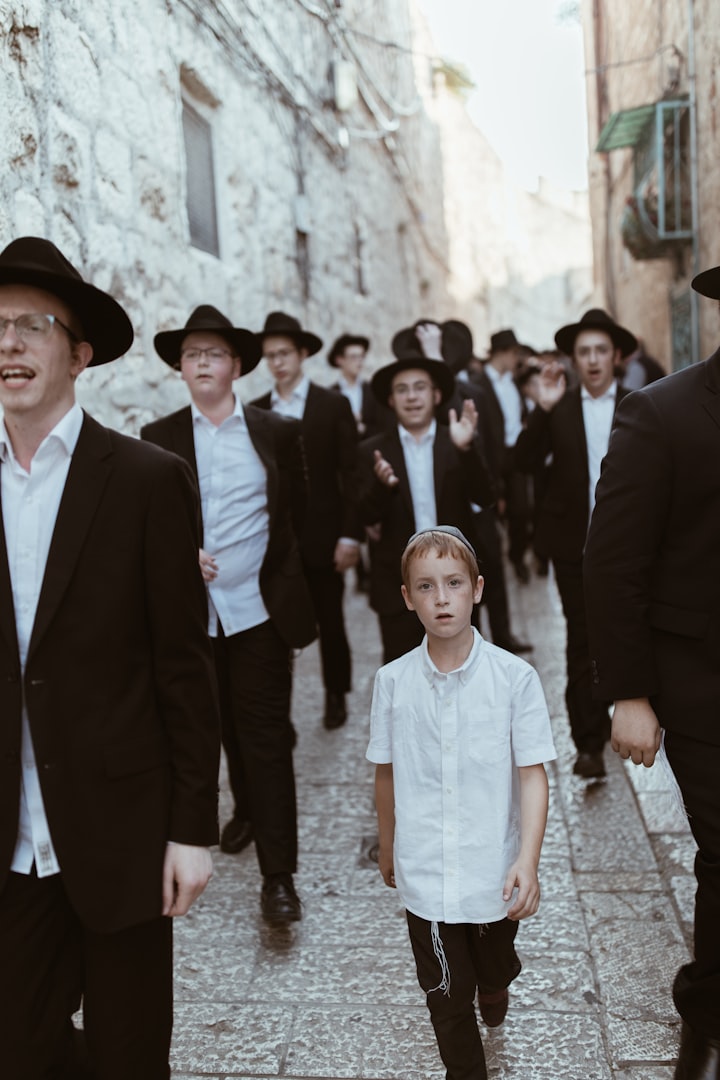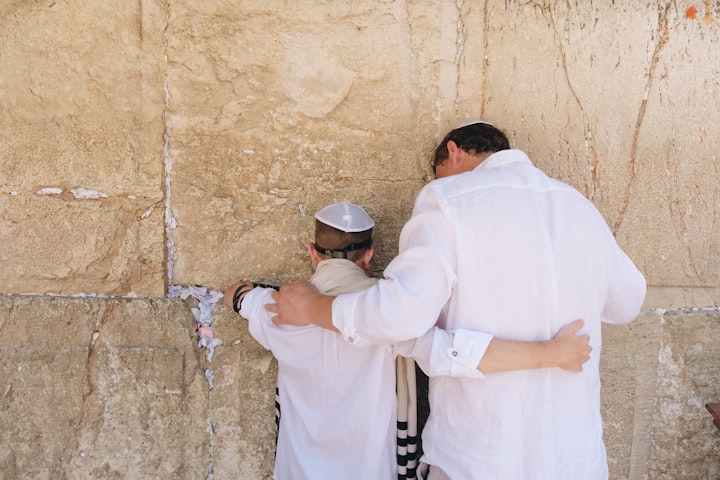Why Jews pray like Muslims
Prayer Unveiled: Exploring the Shared Rituals of Jews and Muslims

In the tapestry of religious practices, the similarities between the prayer rituals of Jews and Muslims are both profound and intriguing. From the rhythmic bowing to the prostration, the parallels in the physicality of their prayers evoke questions about the shared origins and the depth of spiritual connection that transcends religious boundaries. As we delve into the reasons why Jews pray in a manner reminiscent of Muslims, we uncover a rich historical, theological, and cultural interplay that has shaped these rituals over centuries.
**Historical Ties: Tracing Common Roots**
To understand the shared elements of Jewish and Islamic prayer, one must embark on a journey through the corridors of history where the roots of these practices intertwine. Both religions trace their lineage to the patriarch Abraham—an iconic figure revered for his unwavering faith. The common ancestry provides a historical context for shared rituals that echo through time.
In the early days, Judaism and Islam evolved in proximity, with the followers of each faith influencing the other through cultural exchanges, trade routes, and shared regions of habitation. The historical narrative of Prophet Muhammad and the early Muslim community included interactions with Jewish tribes, fostering a cross-pollination of traditions.
**Physicality of Worship: A Universal Language**
One of the striking resemblances between Jewish and Islamic prayers lies in the physical postures adopted during worship. The act of bowing (Ruku) and prostration (Sujud) is a fundamental aspect of Muslim prayer. Similarly, in Judaism, worshippers engage in bowing and prostration during certain parts of the prayer service, particularly in the Amidah, the central prayer in Jewish liturgy.
These shared physical gestures are not merely a matter of coincidence; they signify a universal language of humility, submission, and connection with the divine. Across cultural and religious boundaries, the act of bowing symbolizes surrender and the acknowledgment of a power greater than oneself—a theme woven into the fabric of both Jewish and Islamic theology.
**Common Theological Threads: Unity in Diversity**
Theological underpinnings further illuminate the parallels in prayer rituals. Both Judaism and Islam emphasize the oneness of God—monotheism being a foundational tenet. The shared belief in a singular, all-powerful deity forms the spiritual backbone of these two Abrahamic faiths.
The act of bowing and prostration, beyond its physicality, serves as a manifestation of humility before God. By adopting these postures, both Jews and Muslims express their devotion, recognizing the unity of creation and their submission to the divine will. Theological parallels in concepts of prayer as a means of communication with the divine and a channel for seeking guidance contribute to the converging paths of these rituals.
**Cultural Exchange: Influence Across Borders**
Throughout history, Jews and Muslims coexisted in regions marked by cultural diversity, allowing for an exchange of customs and traditions. This cultural interchange, especially during periods of relative harmony, facilitated the cross-pollination of religious practices. Shared spaces, marketplaces, and neighborhoods became conduits for the diffusion of rituals, fostering a sense of shared humanity.
In medieval Spain, under Muslim rule, a period known as the Golden Age, Jewish and Muslim scholars engaged in a flourishing intellectual exchange. This era witnessed the translation of ancient texts, scientific advancements, and a synergy in the arts and philosophy that left an indelible mark on both cultures. The interplay of ideas extended to religious practices, influencing the evolution of rituals in subtle yet significant ways.
**Mystical Dimensions: Kabbalah and Sufism**
The mystical dimensions of Judaism and Islam, namely Kabbalah and Sufism, offer additional layers of understanding to the shared prayer practices. In Kabbalistic teachings, the Sefirotic Tree—a symbolic representation of divine emanations—aligns with the concept of spiritual ascent during prayer. The bowing and prostration in Jewish worship symbolize the mystical journey of the soul seeking closeness to God.
Similarly, in Sufism, the esoteric branch of Islam, the physical postures of prayer are imbued with profound mystical significance. Sufi practitioners engage in a form of meditative dance known as dhikr, incorporating rhythmic movements reminiscent of the bowing and prostration seen in Islamic prayers. This mystical parallelism reflects the shared quest for a deeper, transcendent connection with the divine.
**Evolution Through Time: Adaptation and Resilience**
As both Jewish and Islamic communities traversed diverse geographies and navigated the tides of history, the adaptability of prayer rituals became evident. The core essence of bowing and prostration persisted, serving as a timeless thread connecting generations, yet the expression of these rituals took on nuanced variations.
For Jews, the synagogue became the focal point of communal worship, and the prayer shawl (Tallit) became a symbolic garment worn during prayer. In Islam, the mosque and the distinctive prayer rug became integral to the prayer experience. Despite these variations, the fundamental gestures of bowing and prostration endured, reinforcing the shared spiritual heritage.
**Contemporary Reflections: Unity Amidst Diversity**
In the contemporary landscape, where global connectivity and interfaith dialogue have become increasingly prominent, the shared elements of Jewish and Islamic prayers offer a poignant reflection on unity amidst diversity. As communities engage in dialogue, mutual understanding deepens, and the recognition of shared practices fosters a sense of kinship.
Interfaith initiatives, where Jews and Muslims come together to explore the commonalities in their spiritual practices, contribute to a narrative of coexistence. Recognizing the beauty in diversity while celebrating the shared aspects of worship allows for a richer tapestry of religious pluralism.
**Conclusion: Threads in the Tapestry of Faith**
The convergence of Jewish and Islamic prayer rituals is a testament to the interconnectedness of human spirituality. Across the centuries, through historical intersections, cultural exchanges, and shared theological foundations, the bowing and prostration in Jewish and Islamic prayers have become threads woven into the tapestry of faith.
As Jews and Muslims engage in these timeless rituals, they embody a shared human experience of seeking divine connection, humility, and surrender. The beauty of these shared practices lies not only in their historical roots but in their capacity to transcend religious boundaries, fostering a deeper understanding of the profound unity that underlies the diverse expressions of faith. In the shared postures of prayer, the echoes of Abraham's legacy resonate, inviting all who bow and prostrate to reflect on the universal language of the human soul in its quest for the divine.
About the Creator
Danielle Steel
Professional Writer






Comments
There are no comments for this story
Be the first to respond and start the conversation.